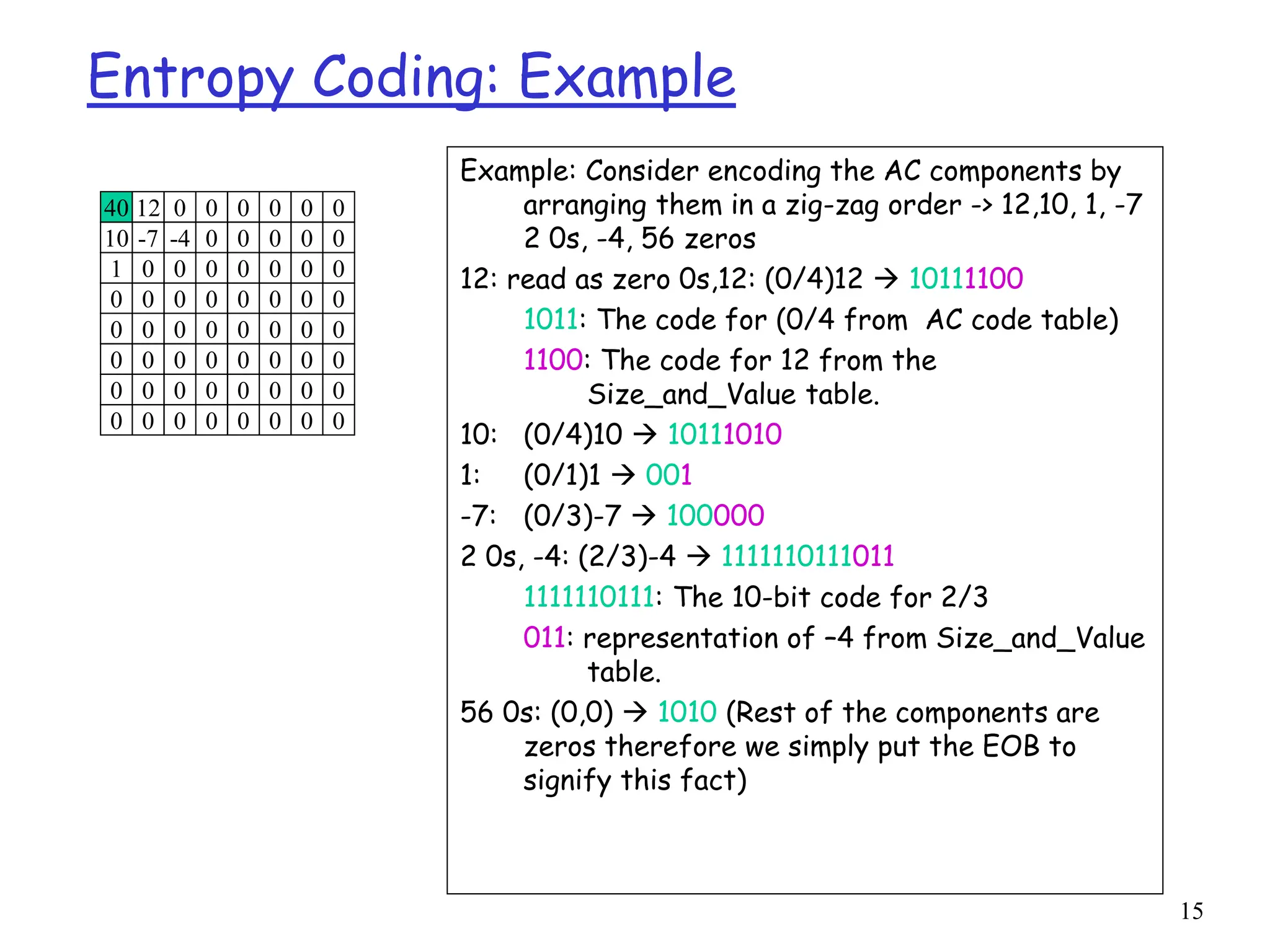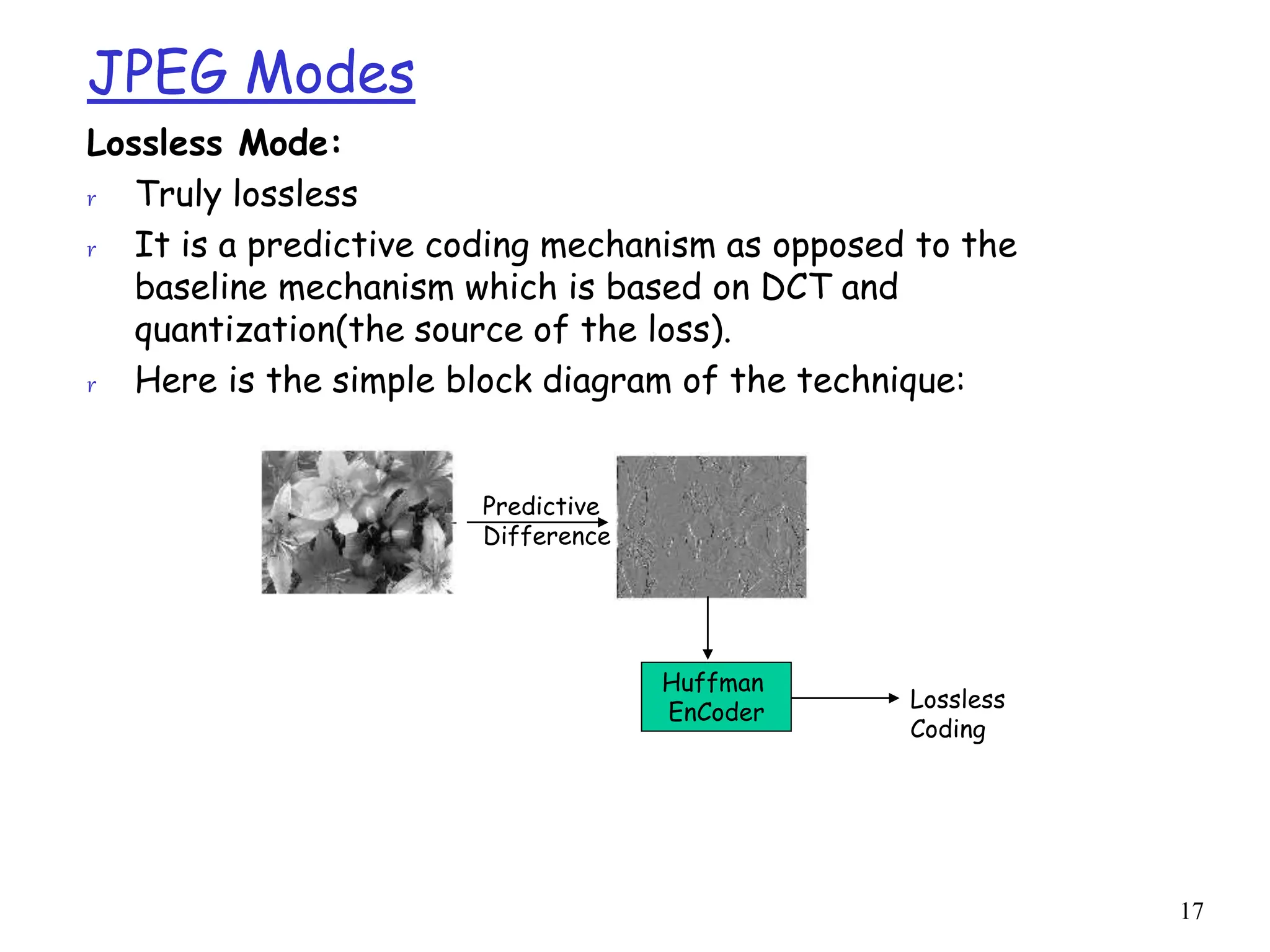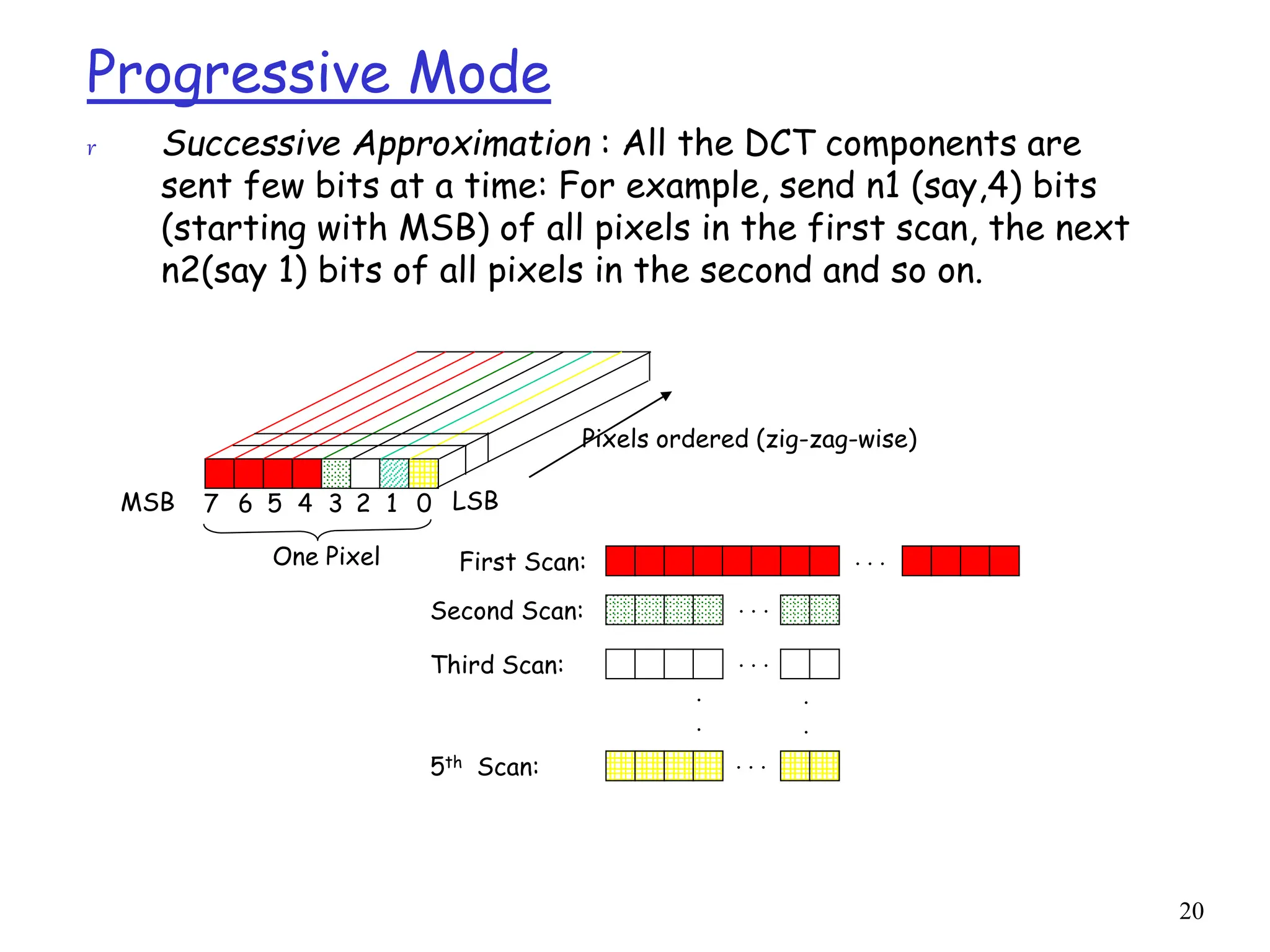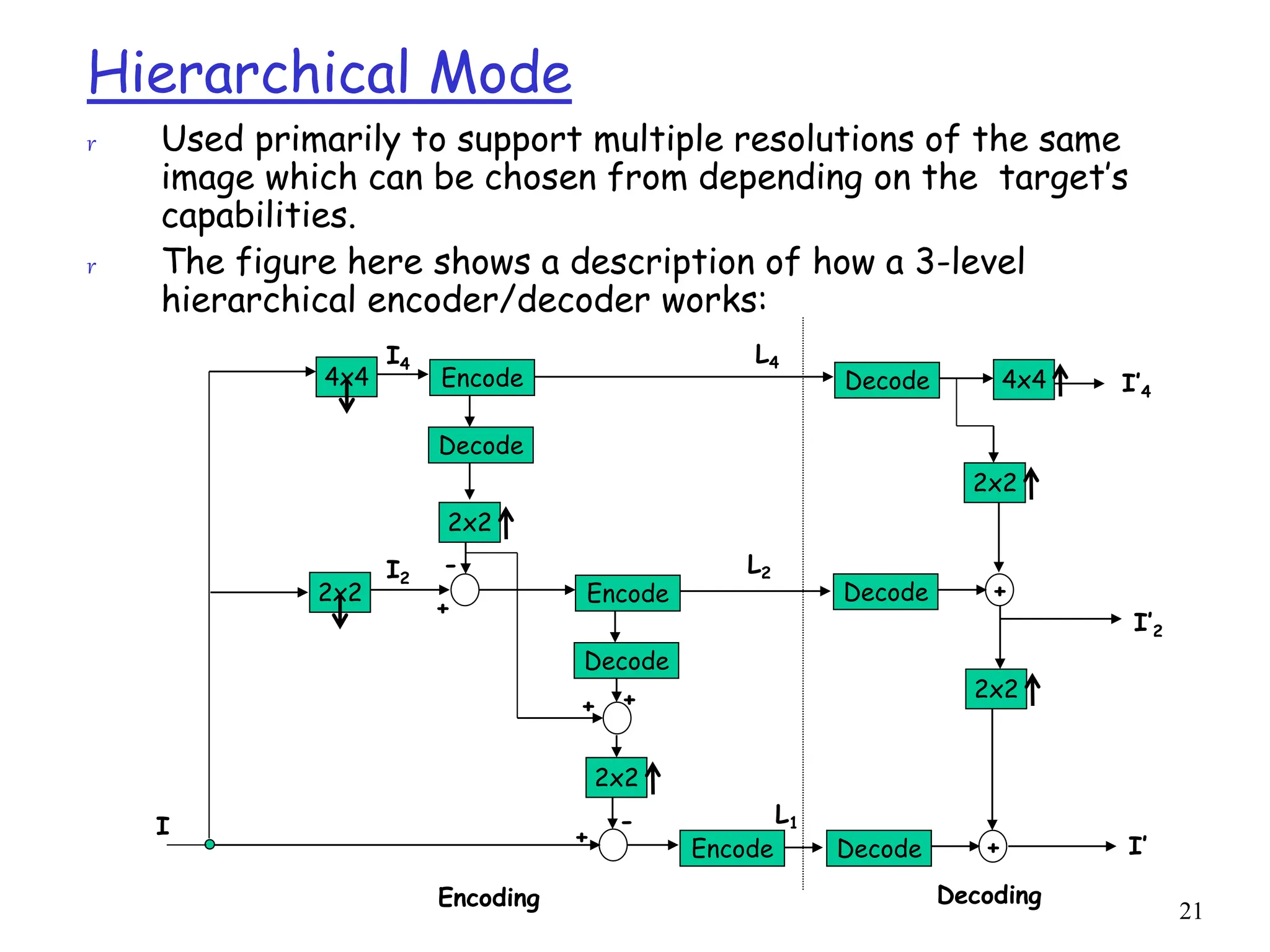JPEG uses DCT, quantization, and entropy coding to provide lossy compression of images. It can operate in several modes, including sequential, lossless, progressive, and hierarchical. Sequential mode encodes the whole image in a single left-to-right, top-to-bottom scan. Lossless mode uses predictive coding to encode images without loss. Progressive mode transmits an initial coarse version that is progressively improved over multiple transmissions.
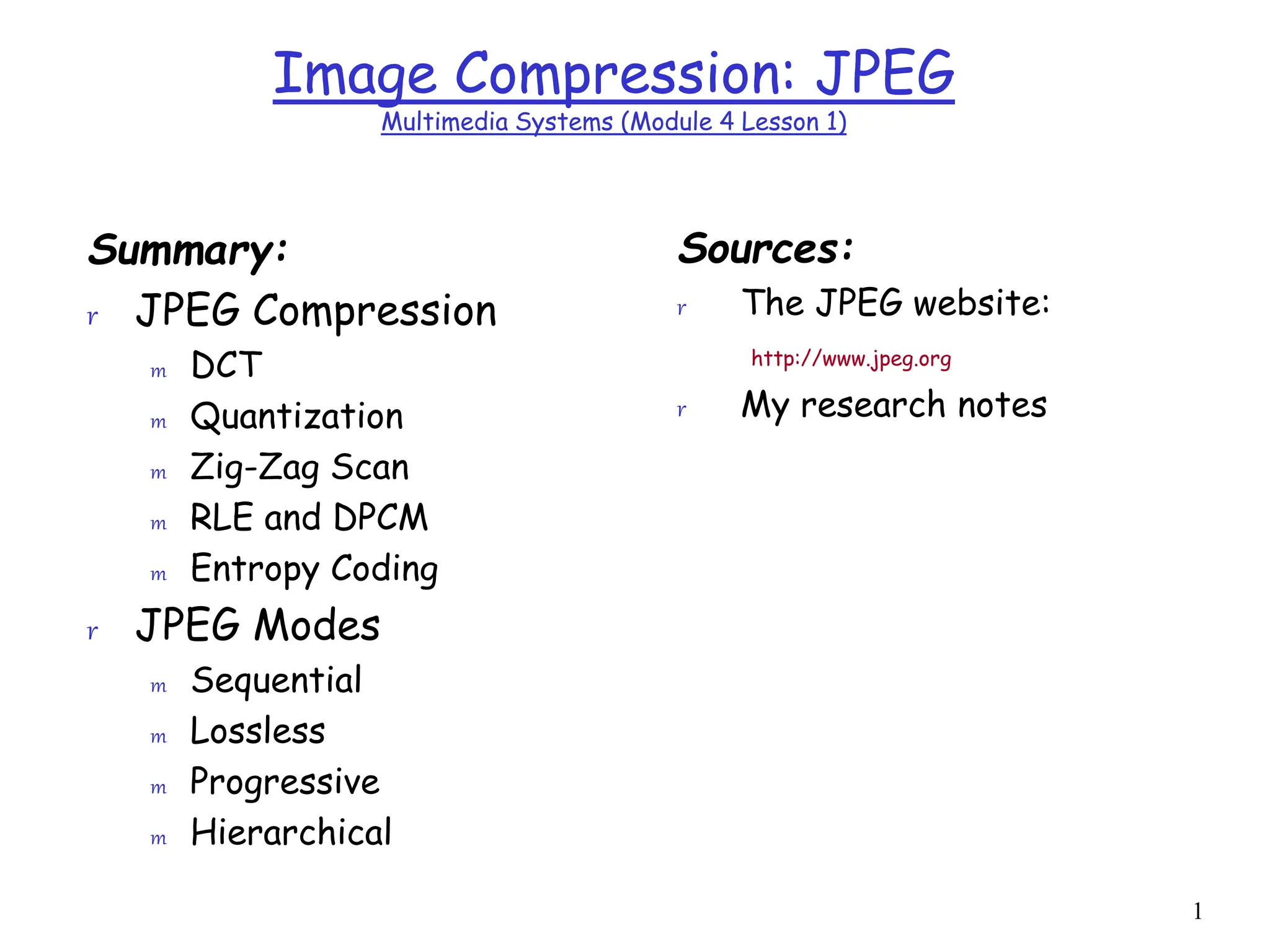
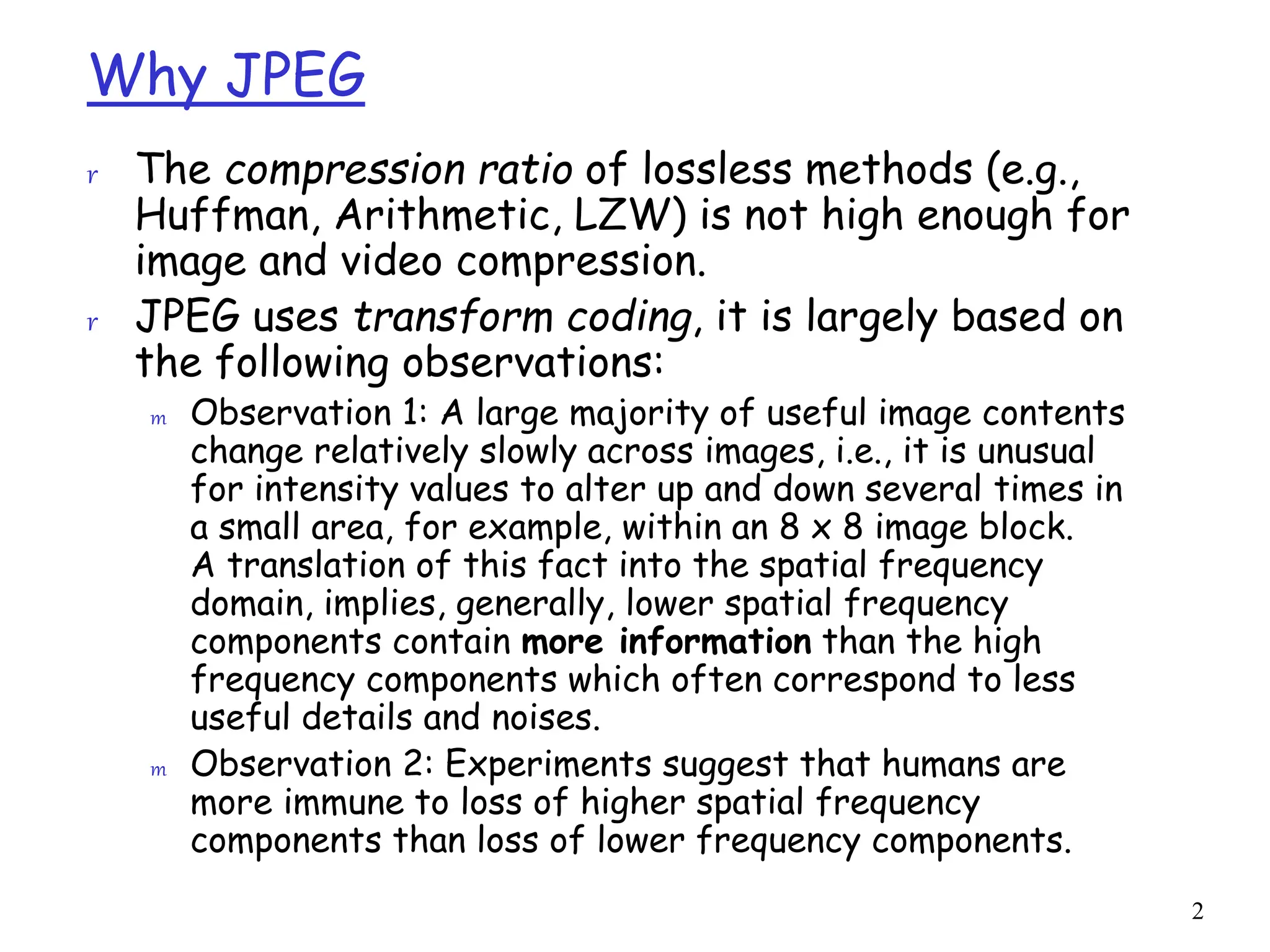
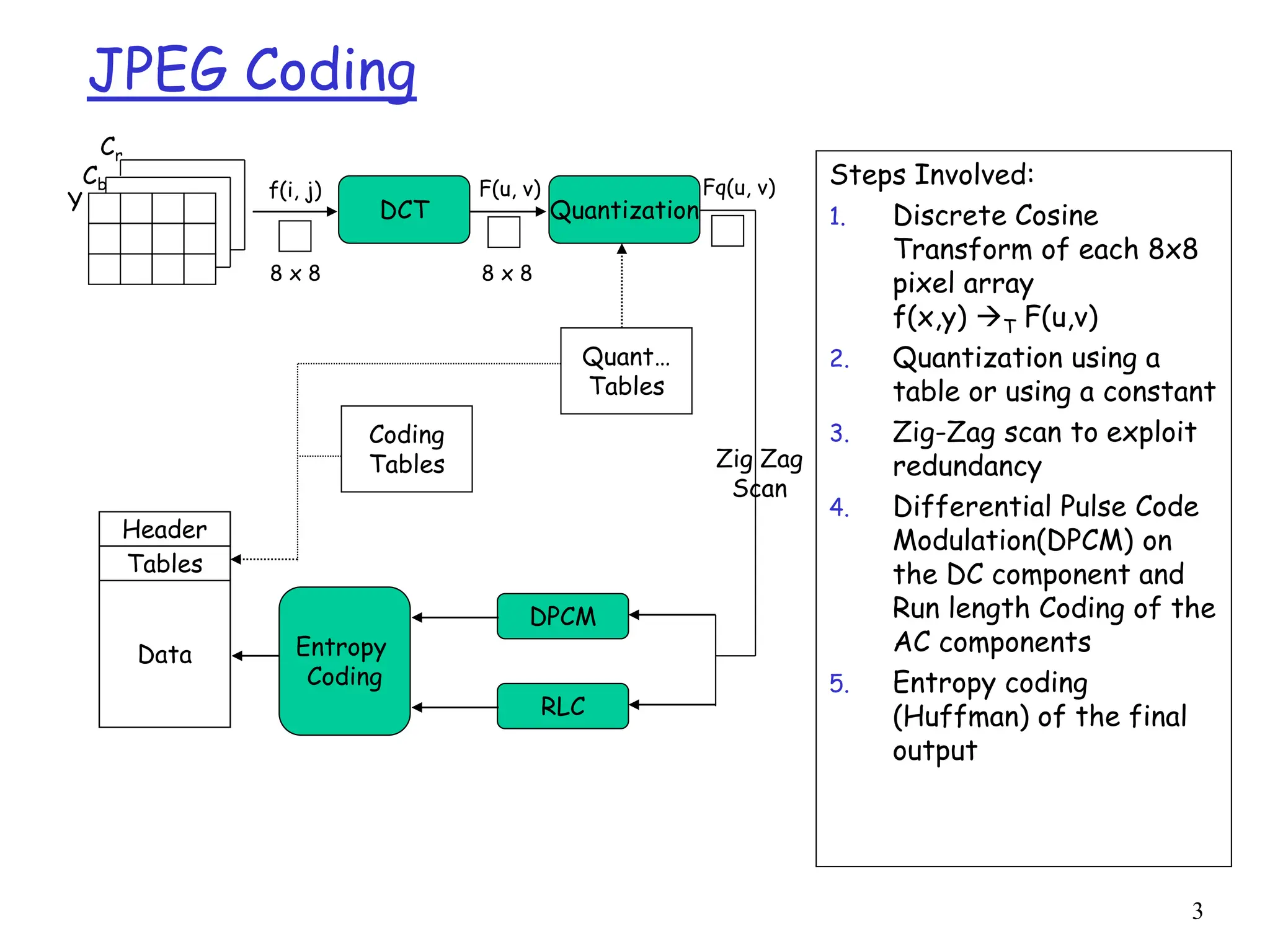
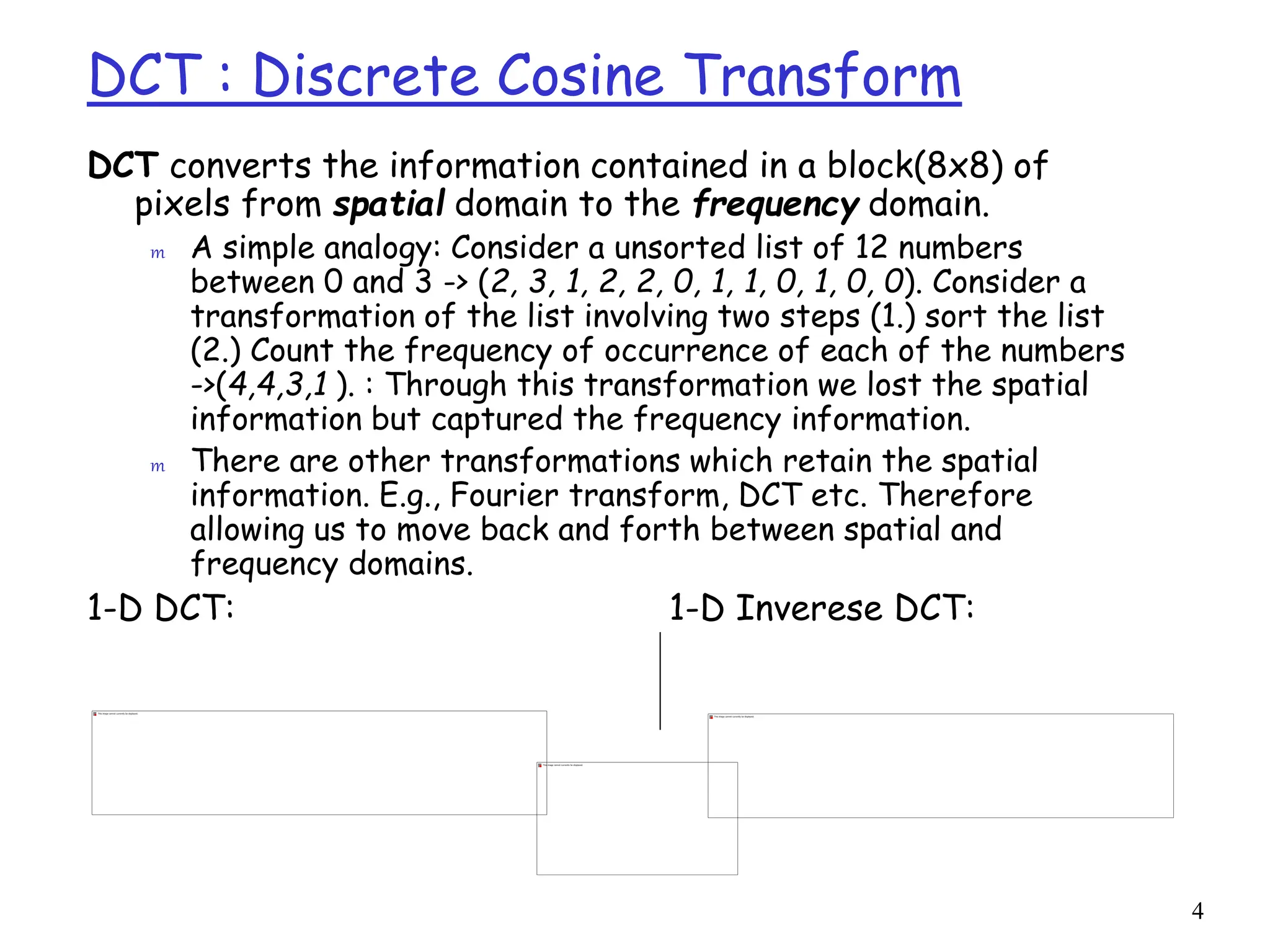
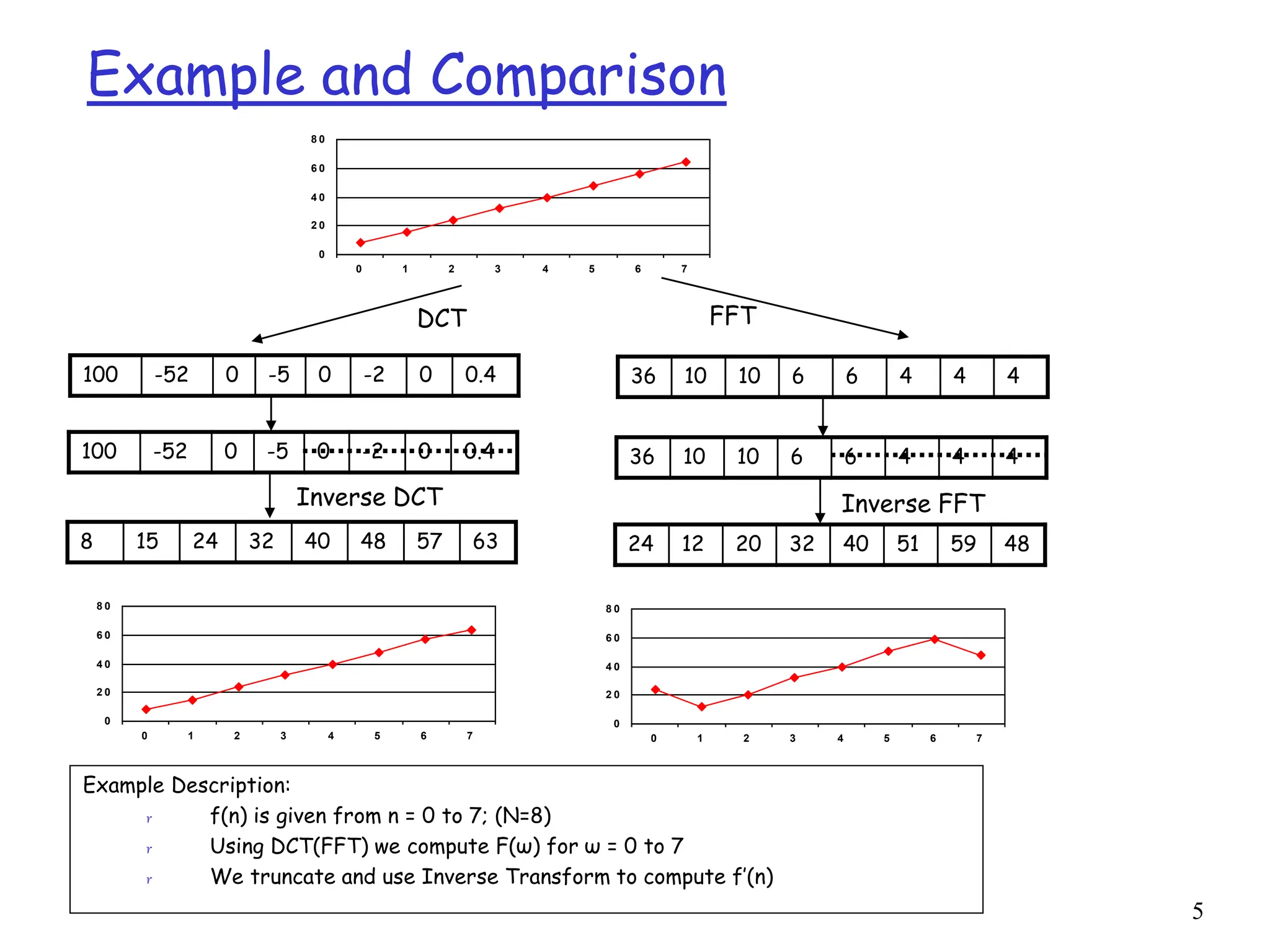
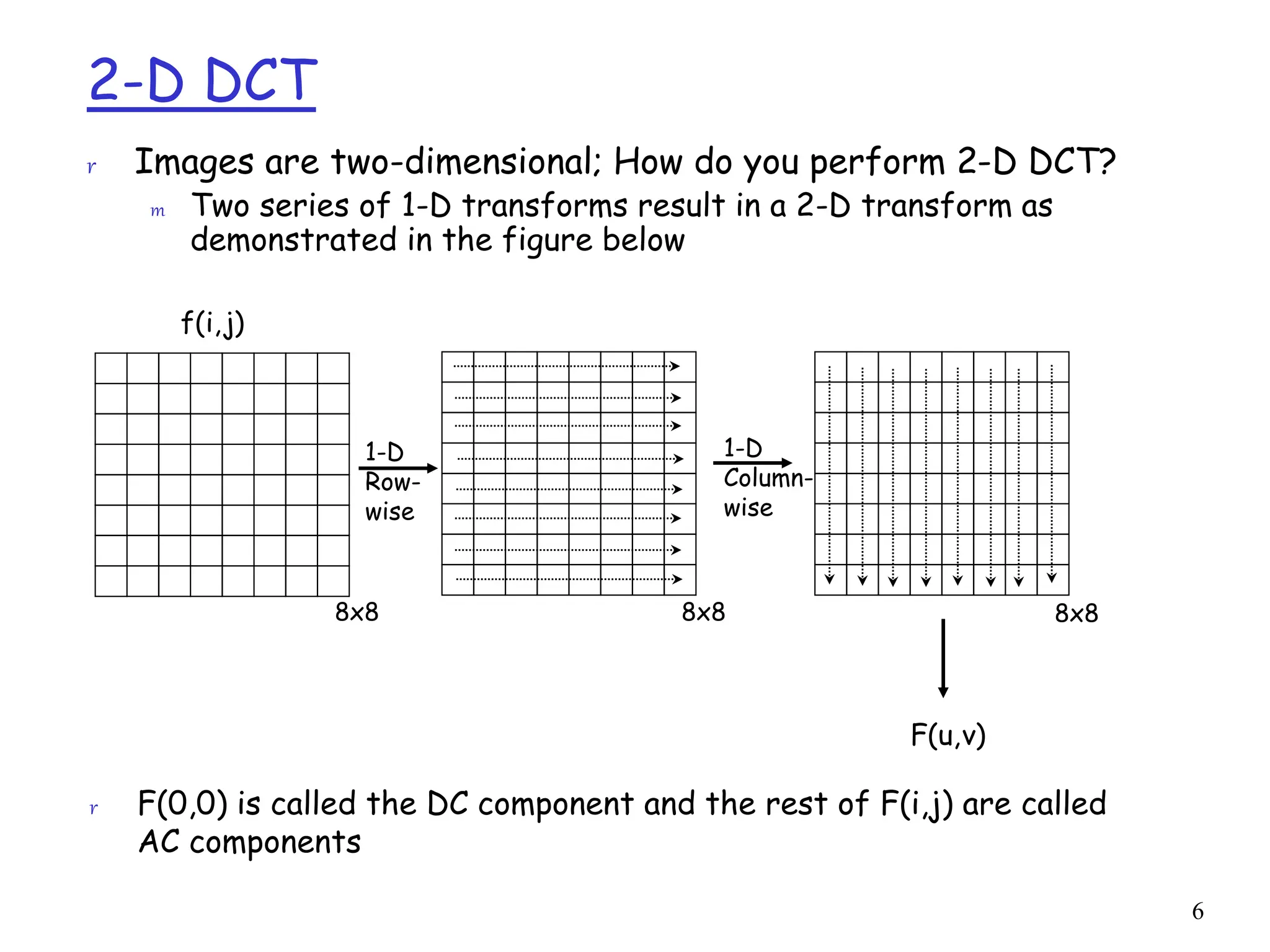

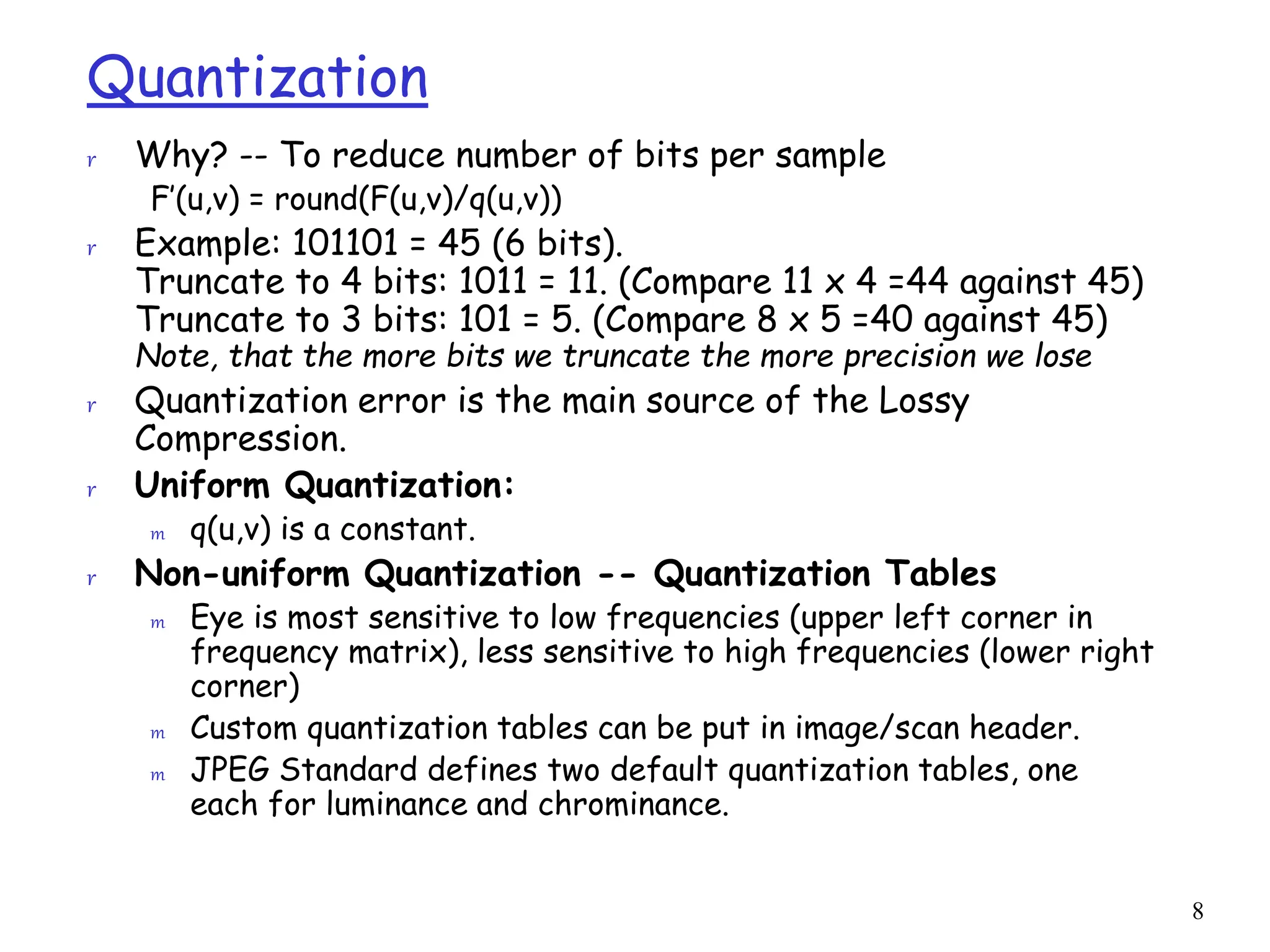
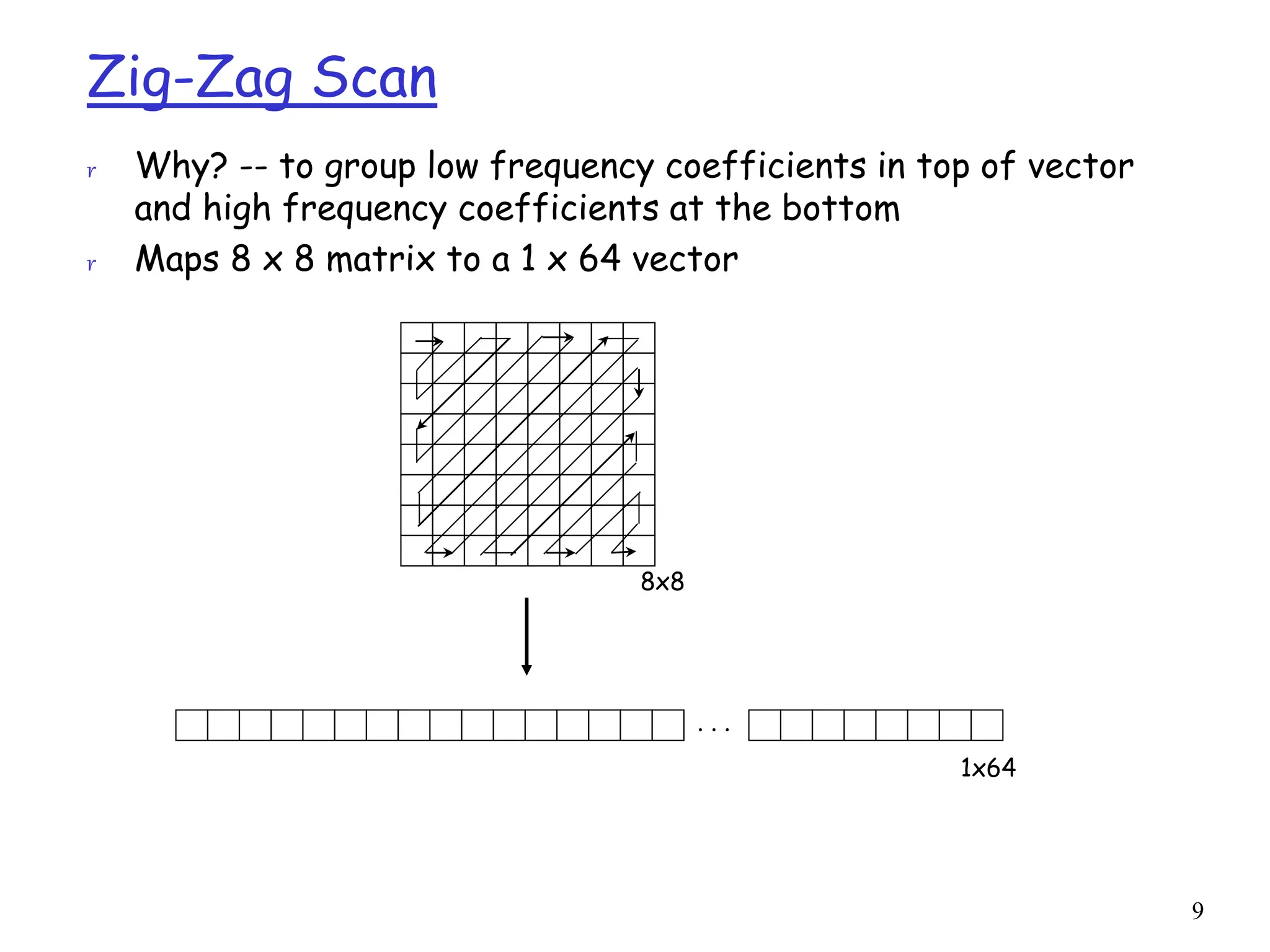
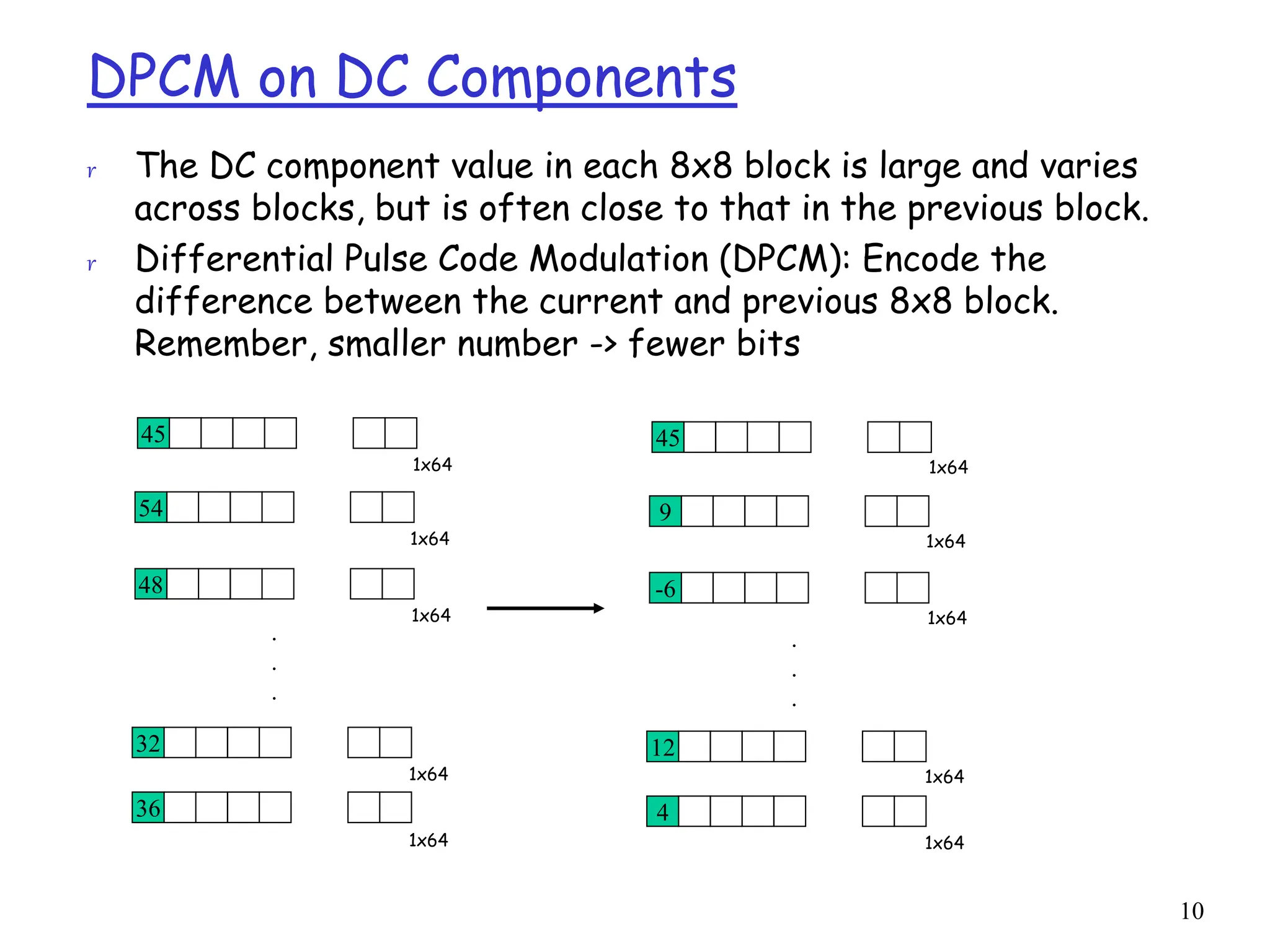
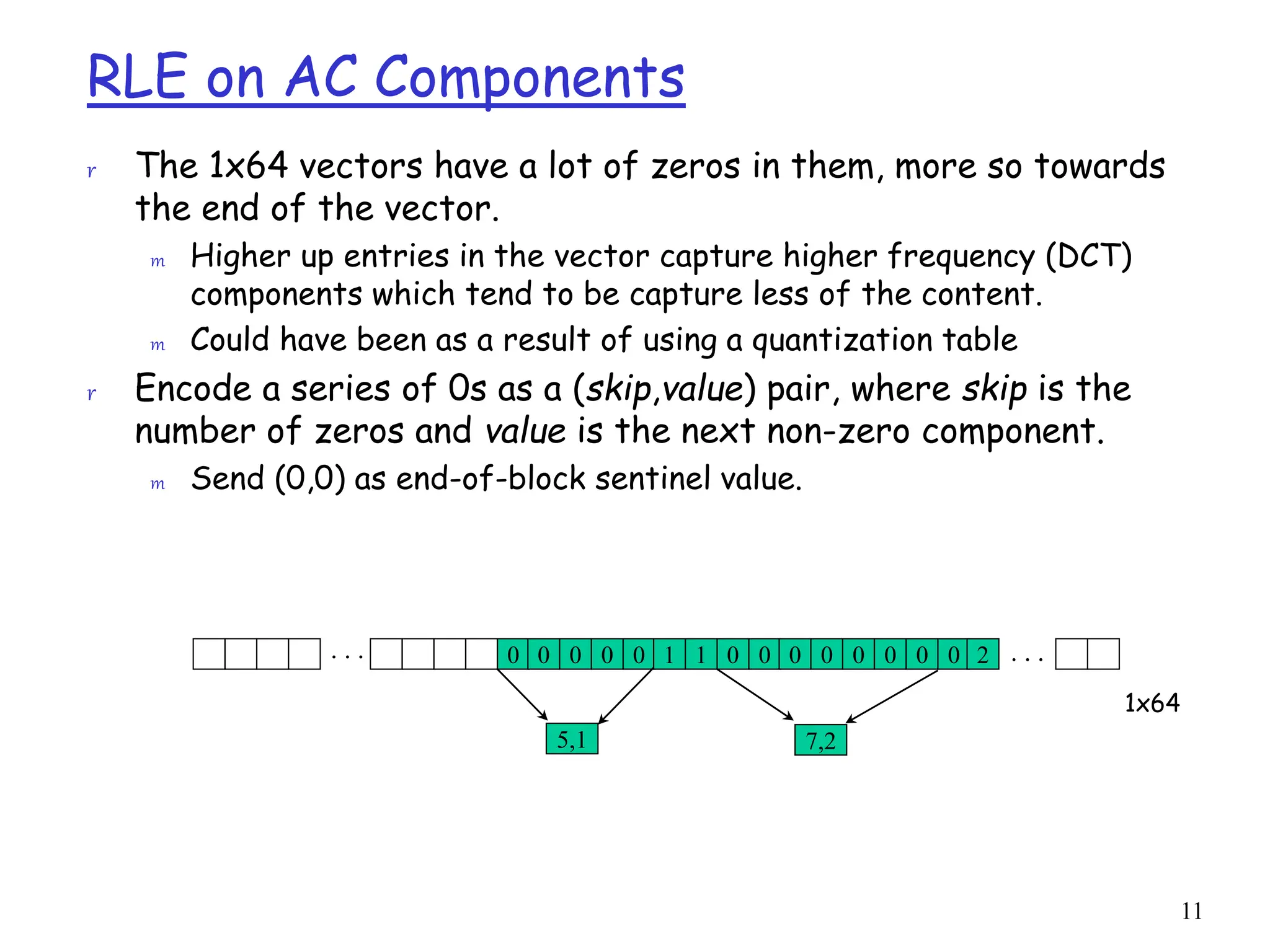

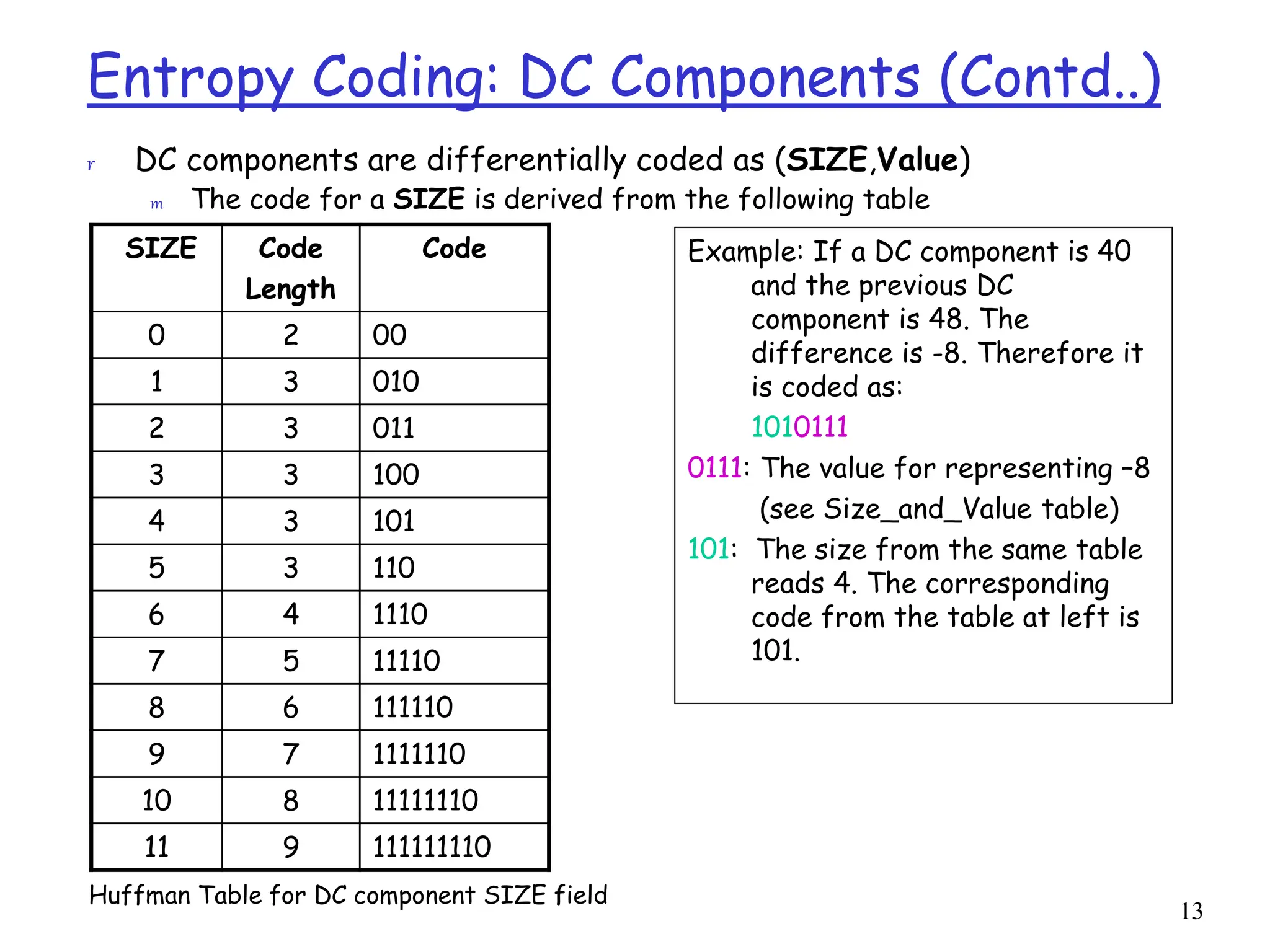
![14
Entropy Coding: AC Components
r AC components (range –1023..1023) are coded as (S1,S2 pairs):
m S1: (RunLength/SIZE)
• RunLength: The length of the consecutive zero values [0..15]
• SIZE: The number of bits needed to code the next nonzero AC component’s value. [0-A]
• (0,0) is the End_Of_Block for the 8x8 block.
• S1 is Huffman coded (see AC code table below)
m S2: (Value)
• Value: Is the value of the AC component.(refer to size_and_value table)
Run/
SIZE
Code
Length
Code
0/0 4 1010
0/1 2 00
0/2 2 01
0/3 3 100
0/4 4 1011
0/5 5 11010
0/6 7 1111000
0/7 8 11111000
0/8 10 1111110110
0/9 16 1111111110000010
0/A 16 1111111110000011
Run/
SIZE
Code
Length
Code
1/1 4 1100
1/2 5 11011
1/3 7 1111001
1/4 9 111110110
1/5 11 11111110110
1/6 16 1111111110000100
1/7 16 1111111110000101
1/8 16 1111111110000110
1/9 16 1111111110000111
1/A 16 1111111110001000
… 15/A More Such rows](https://image.slidesharecdn.com/m4l1-240212085102-c448170f/75/Image-compression-JPEG-Compression-its-Modes-14-2048.jpg)
